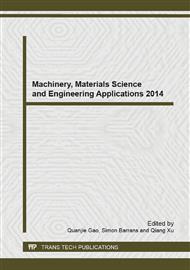[1]
Hirota, R., The Direct Method in Soliton Theory. Cambridge University Press, Cambridge, (2004).
Google Scholar
[2]
Ablowitz, M.J., Segur, H., Solitons and inverse scattering transform. SIAM, Philadelphia, (1981).
Google Scholar
[3]
Fan, E.G., Extended tanh-function method and its applications to nonlinear equations. Phys. Lett. A 277 (2000), 212-218.
DOI: 10.1016/s0375-9601(00)00725-8
Google Scholar
[4]
Malfliet, W., Solitary wave solutions of nonlinear wave equations. Am. J. Phys. 60 (1992) 650-654.
DOI: 10.1119/1.17120
Google Scholar
[5]
Miura, R.M., Backlund Transformation. Springer-Verlag, New York, (1973).
Google Scholar
[6]
Bluman, G.W., Kumei, S., Symmetries and Differential Equations. Springer-Verlag, Berlin, (1989).
Google Scholar
[7]
Yan, C., A simple transformation for nonlinear waves. Phys. Lett. A 224 (1996) 77-84.
Google Scholar
[8]
He, J.H., Wu, X.H., Exp-function method for nonlinear wave equations. Chaos Soliton. Fract. 30, (2006) 700-708.
DOI: 10.1016/j.chaos.2006.03.020
Google Scholar
[9]
Wang, M., Li, X., Zhang, J., The G¢/G -expansion method and traveling wave and solutions of nonlinear evolution equations in mathematical physics. Physics Letters A 372 (2008) 417-423.
DOI: 10.1016/j.physleta.2007.07.051
Google Scholar
[10]
Kudryashov, N.A., A note on the G¢/G -expansion method. Applied Mathematics and Computation 217, (2010) 1755-1758.
DOI: 10.1016/j.amc.2010.03.071
Google Scholar
[11]
Li, X., Wang, M., The G¢/G -expansion method and traveling wave solutions for a higher-order nonlinear Schrodinger equation. Applied Mathematics and Computation 208 (2009) 440-445.
DOI: 10.1016/j.amc.2008.12.005
Google Scholar
[12]
Bekir, A., Application of the G¢/G -expansion method for nonlinear evolution equations. Phys. Lett. A 372, (2008) 3400-3406.
DOI: 10.1016/j.physleta.2008.01.057
Google Scholar


